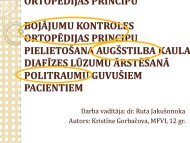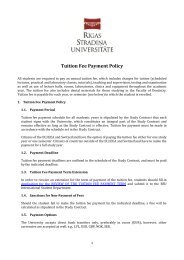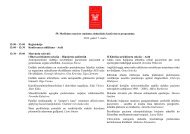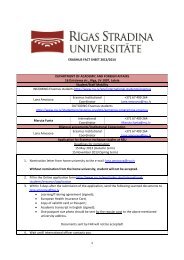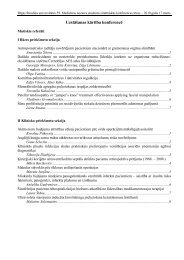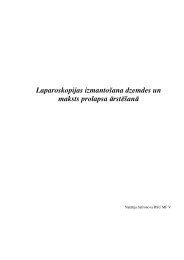History of Latvia: a Brief Survey
History of Latvia: a Brief Survey
History of Latvia: a Brief Survey
- No tags were found...
Create successful ePaper yourself
Turn your PDF publications into a flip-book with our unique Google optimized e-Paper software.
Āraiši – a reconstructed lake-dwellingsettlement <strong>of</strong> ancient Balts, 9th century.Jewellery <strong>of</strong> the ancient Balts, 6-11thcenturies: crossbow brooches, bracelet.dēli (Sons <strong>of</strong> God), Laima (Fate or Fortune) and other deities, mainly maternal figures —female patronesses <strong>of</strong> some specific activities or places (Mother <strong>of</strong> the Sea, Mother <strong>of</strong> theForests etc.). One <strong>of</strong> the most important gods was the god <strong>of</strong> thunder and storms, Pērkons,who fertilised the earth and cleared it <strong>of</strong> the power <strong>of</strong> evil. Pērkons was imagined as a stern,bearded and powerfully built man who traversed the sky in a fiery chariot drawn by swifthorses, or as riding a fiery horse. His head was crowned with a wreath <strong>of</strong> flames. In one handhe held lightning bolts, and in the other, a heavy stone axe. Historical records and Balticfolklore have preserved the names and functions <strong>of</strong> about 200 Baltic gods and goddesses.A Namejs ring, named after thelegendary 13th century Semigallianleader, Namejs. Historical informationsuggests that this identifying symbolwas worn by ancient Semigalliannobility. Today it is worn as an assertion<strong>of</strong> <strong>Latvia</strong>n identity.6Written sources <strong>of</strong> the 13th century list the names <strong>of</strong> some <strong>of</strong> the greatest leaders or kings<strong>of</strong> the Baltic and Finno-Ugrian tribes: Lamekins among the Couronians, Tālivaldis among theLatgallians, Namejs (Nameisis) and Viestarts amongthe Semigallians, and Ako and Kaupo among the Livs.The most renowned leader was Semigallian Namejs,almost a mythical figure in modern <strong>Latvia</strong>n literature.He is believed to have attempted a significant militarycampaign in 1286, <strong>of</strong> allied Baltic tribes against theinvading German military contingent known asthe Livonian Order (Latin: Fratres militiae Christi deLivonia).



